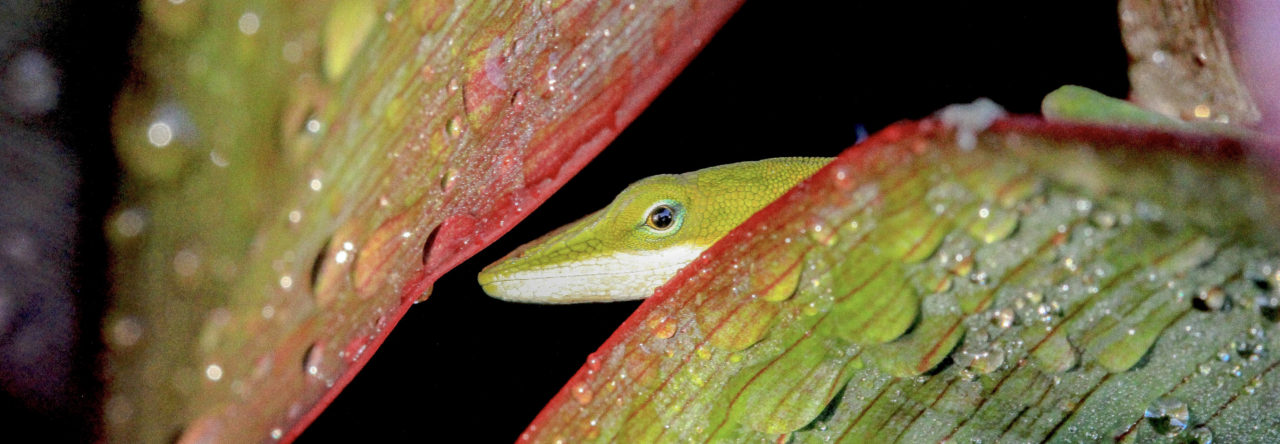Almost nothing is known about Anolis macrinii, which is a little surprising because it is rather large (nearly 100 mm snout-vent length) and apparently locally moderately abundant. However, it’s small, localized range in Oaxaca, Mexico is no doubt the explanation. In any case, now a bit more is known, thanks to a recent paper by Gunther Köhler and colleagues in Breviora (freely available on the MCZ publications website).
The paper includes a detailed morphological description of the species, as well as notes on natural history and conservation status. Most interesting to me is the sexual dimorphism in dewlap size (males on top above, females below), which we have discussed in previous posts, and the aberrant patterning of one juvenile individual (right).
Here’s the abstract:
During three short visits to the coffee-growing region in the hills north of Pochutla (Oaxaca, Mexico), we observed Anolis macrinii in its natural habitat. The species appeared to be relatively abundant, and we collected 12 individuals, including several adult males. The holotype of this species was reported erroneously to be an adult male but actually is a female. The confusion might have arisen from the moderate-sized dewlap present in adult females. However, males have a very large dewlap and a pair of moderately to greatly enlarged postcloacal scales. We provide color descriptions in life for three individuals, color photographs in life, description and illustration of hemipenis morphology, and some natural history notes. Finally, we discuss the conservation status of this species.
- Evolution in Real Time on Lizard Island - March 23, 2025
- Spider Snags Adult Anolis osa - March 22, 2025
- An Homage to the Green Anoles of New Orleans - March 21, 2025





Yoel Stuart
Looks twiggy.
Kuti Ra
looks a lot like A. petersi or A. biporcatus, particularly the females.